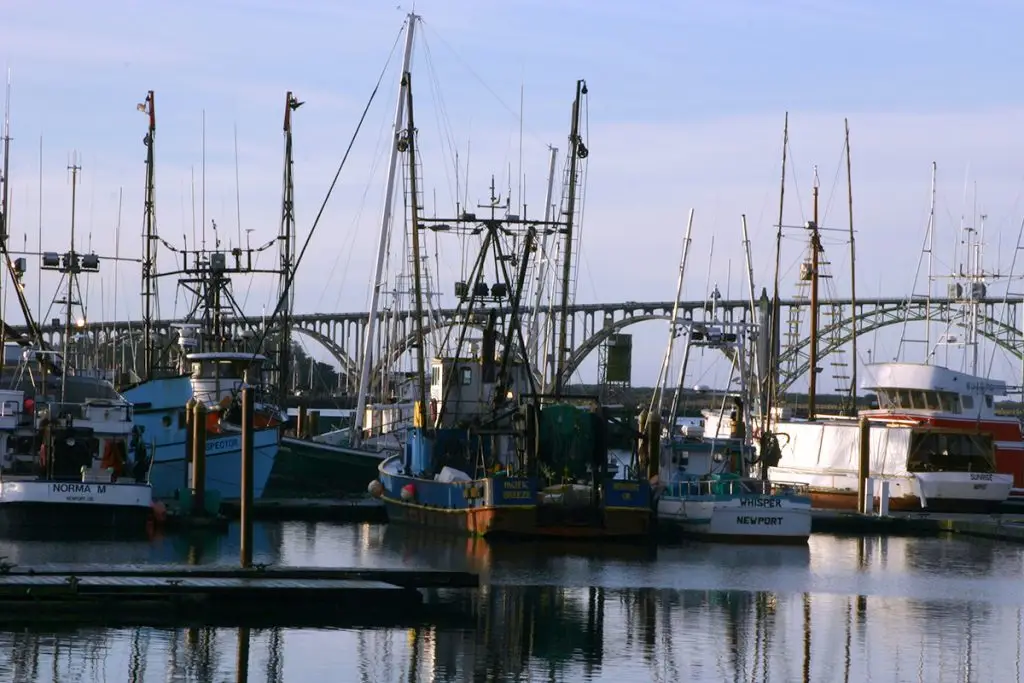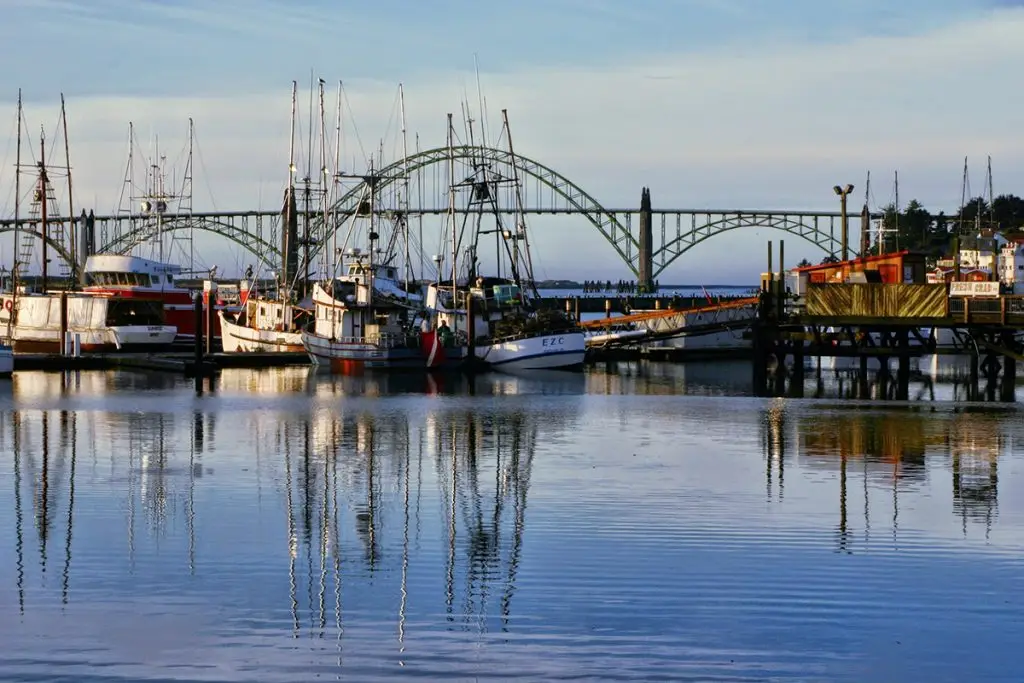Sustainable Shrimp Fisheries
LifeSource Natural Foods | Posted on |
Sustainable Shrimp Fisheries
What could be better than Oregon pink shrimp?
Matthew Trickey
Shrimp and prawns are the most popular variety of seafood in the United States. The rising demand for shrimp has global repercussions, with economic incentives for more production and more harvests wherever possible. We currently import over 90% of shrimp from sources outside the country, half from the ocean and half from shrimp farms. Is this demand sustainable? Are we eating all the shrimp? Not to worry, shrimp grow faster than we harvest them and they are certainly in no danger of extinction. There is, however, another side to shrimp consumption that creates great concern. Despite abundant stocks of shrimp in the wild, unregulated fishing and industrial farming practices are creating problems for people, and the environment.
Shrimp are plentiful but our appetite is huge!
There are plenty of shrimp in the sea. As a fertile, fast-growing species, shrimp are able to reproduce their stocks faster than humans harvest them from the wild. Despite facing habitat and environmental pressures the main sustainability issues are caused by demand for inexpensive shrimp meat. Within the last thirty years, demand for shrimp in the United States has far outpaced domestic wild harvests and farm production, leading the country to import the majority of the shrimp it consumes. The lucrative market also creates global incentive to catch or grow a lot of shrimp, cut costs at the expense of the environment, and employ abusive labor practices. The end result of this rapid rise in overseas fishing and farming of shrimp is destruction of coastal environments and harm to marine wildlife.
Farming Global Climate Change
One of the greatest issues of concern, is environmental destruction from farming practices. Most of the shrimp imported into the US come from open pond farms along the coast of countries with tropical environments and lush mangrove forests, the natural habitat of young shrimp. Most shrimp farms use pesticides, antibiotics, and intensive inputs that remain in runoff water. Clearing land for farms means destruction of coastal mangroves. Mangroves, critical to climate regulation, are being cleared away to make shrimp farms that have a short productive lifespan before they are abandoned due to salt buildup. Three years is the average time until salt and pollution build up to the point that nothing can grow in the soil. The cycle repeats, more mangroves are cleared and the farms move along the coast leaving a swath of ruined, toxic soil. Mangrove clearing is the most serious threat to the global climate because mangroves sequester enormous amounts of carbon. Clearing mangroves is equivalent to clearcutting thousands of acres of rainforest.
Why not just catch shrimp from the ocean?
If shrimp are so abundant in the wild, why do we need all these farms? We could certainly harvest enough shrimp from the ocean, but fishing is more expensive than farming. In the most of the shrimp fisheries worldwide, the economics of harvest is closely related to ecological harm. Because shrimp are small and live near the ocean bottom, the nets have small holes and require weights to sink. Depending upon the conditions and life on the sea floor, these nets can cause tremendous damage as they are dragged along the ocean bottom. If the nets are dragged over reefs, they physically damage the reef and snare reef wildlife in the small holes. Commercial fishing vessels catch a lot of unintended marine life along with their target species. This “bycatch” may include endangered marine animals, fish, tortoises, and sea birds. Unfortunately, these creatures do not survive being snared in the shrimp nets. Except in certain US fisheries, there is little economic incentive to reduce bycatch or seafloor destruction. The driving factor in most international fisheries is quantity of shrimp at the cheapest cost. In the United States, shrimp fleets have adopted technology to strain out bycatch and harvest ecologically with only about a three percent decline in catch, but even in US fisheries there are groups actively seeking more profit by dismantling sustainability regulations.
Do we have a voice for sustainability?
Mass market economics may pressure fisheries away from sustainability, but there is some hope for improvement. In the natural foods industry, the call for sustainability is becoming a driving market force. In response to growing consumer demand for sustainable seafood, many retail stores, such as LifeSource, are adopting Monterey Bay Aquarium Seafood Watch standards for seafood. The Seafood Watch program helps stores source shrimp from sustainable fisheries, and ensures consumers an educated voice in seafood selection.
The economics of a sustainable fishery
In general, US commercial fisheries are managed with sustainability as a goal. The term “Commercial Fishery” refers to the entire process of managing, catching, processing and selling natural resources of the sea. Three standards are fundamental in managing sustainable fisheries, habitat protection, reducing bycatch, and managing stock. The success of American shrimp fisheries in Oregon and Alaska demonstrate that It‘s possible to economically maintain a sustainable harvest. The Oregon pink shrimp fishery is MSC (Marine Stewardship Council) certified sustainable because of the work of its members. At the core of this success is an economic motivation for sustainability. Operating under the environmentally progressive management of Oregon Department of Fish and Wildlife, members of the Oregon Trawl Commission decided to seek MSC certification in 2006 to demonstrate their interest in sustainability and increase the value of their product. Reduction of bycatch is the factor that most helped this fishery achieve certification. Through innovation and trial and error, devices such as the “Otter Trawl” or “round gate” which directs fish up and out of the trawl nets, allowed shrimp boats to reduce bycatch to 2% or less. Compared to the 300% by weight bycatch levels found in some unmanaged open-ocean shrimp fisheries, this simple device makes a tremendous difference. When the shrimp from this fishery are brought to market, consumers can buy and enjoy these wild shrimp without a worry towards sustainability.
What about shrimp farms?
Economics forms the basis of the solution to the sustainability issue with shrimp farms as well.
Not all shrimp farms create environmental destruction. A growing trend is for closed recirculating shrimp farms that are sustainable and even organic. Depending upon what the shrimp are fed, recirculating farms could be considered the optimal solution to meet the growing demand for shrimp sustainably. When using fish meal as feed, there is still some environmental impact, though it is possible to use waste from other fishing industries. Plant-Based feed, especially organic feed is a viable option for shrimp. Non-GMO plant-based organic feed and recirculating water is the best option for generating a premium healthy shrimp to meet domestic consumer demand. Unfortunately, good practices in shrimp farming come at an added cost and it is hard to compete against Asian and South American imports. Tariffs on imports are a temporary solution at best. The path toward sustainability is in the hands of the consumers.. It is difficult to counter the belief that food should be cheap, yet this is exactly the pressure facing US shrimp consumers, choose sustainable harvests or choose exploitation and environmental destruction. It may seem an insurmountable obstacle but the growing awareness and demand for sustainable foods has already affected seafood markets significantly.
Shop for sustainability
LifeSource bases our seafood selections on recommendations from the Monterey Bay Aquarium’s Seafood Watch program. This program uses scientific fisheries data and examines fishery practices to determine good seafood choices and those to avoid. LifeSource carries shrimp from the MSC certified Oregon pink shrimp fishery, which supports local fishing businesses, and a sustainable approach to harvesting wild shrimp.
Make your seafood purchases count, buy MSC and Seafood Watch sustainable products, avoid “all you can eat” cheap foreign shrimp, and support local fisheries and families. Together we enjoy the flavor of sustainability.

Watch a video about Oregon Shrimp Fishing
Click here to discover more about our sustainable seafood selection.

https://lifesourcenaturalfoods.com/recipe/pink-bay-shrimp-ceviche/

Photography by Hugh Pennock
Oregon shrimp trawlers in Newport Bay




4 Comments
Sir, Is there any investors who can help me out ti start a shrimp farm in India please do contact me 9i843324126.
Bull crap wild caught shrimp is way better than farm raised they need to stop farm raised shrimp they are nasty and full of harmful chemicals yes I’m a commercial shrimp since I was a child 2nd generation
Captain Antoine, thank you for supporting sustainable wild shrimp fisheries. As a retail store, we have very strict standards for shrimp, and we only carry wild caught shrimp from sustainable US fisheries. We work together with local fishing vessels to bring the fresh catch to our customers without worry about tomorrow’s fishery health. Sea captains work to maintain the health of the ocean, and local fisheries, because their livelihood depends on fishing in the future.